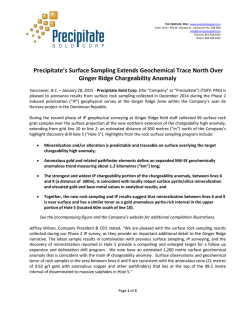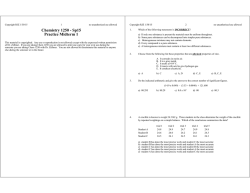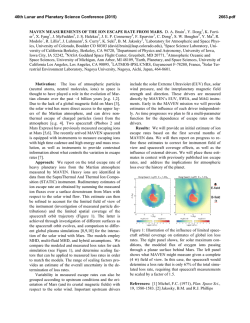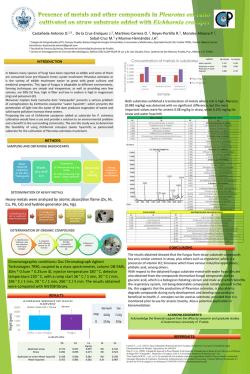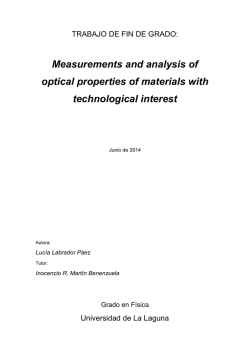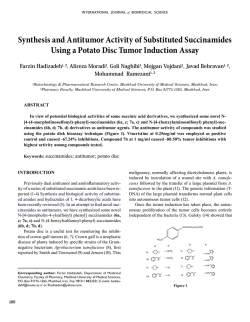
Section 4.6: Double Displacement Reactions
Section 4.6: Double Displacement Reactions Tutorial 1 Practice, page 175 1. (a) Step 1. Write the chemical formulas of the reactants. Na2S(aq) Pb(NO3)2(aq) Step 2. Separate the reactants into their ions. Na+ Na+ S− Pb2+ NO3− NO3− Step 3. Combine cations and anions to form new compounds. NaNO3 PbS Step 4. Check for low solubility. PbS is slightly soluble, while NaNO3 is very soluble. Therefore, PbS should precipitate. Step 5. Write a balanced chemical equation for the reaction, including state symbols. The balanced chemical equation is: Na2S(aq) + Pb(NO3)2(aq) → PbS(s) + 2 NaNO3(aq) (b) Step 1. Write the chemical formulas of the reactants. NH4Cl(aq) K2SO4(aq) Step 2. Separate the reactants into their ions. NH4+ Cl− K+ K+ SO42− Step 3. Combine cations and anions to form new compounds. (NH4)2SO4 KCl Step 4. Check for low solubility. Both compounds are very soluble, so no precipitate forms: no reaction. (c) Step 1. Write the chemical formulas of the reactants. FeCl3(aq) Na2CO3(aq) Step 2. Separate the reactants into their ions. Fe3+ Cl− Cl− Cl− Na+ Na+ CO32− Step 3. Combine cations and anions to form new compounds. Fe2(CO3)3 NaCl Step 4. Check for low solubility. Fe2(CO3)3 is slightly soluble, while NaCl is very soluble. Therefore, Fe2(CO3)3 should precipitate. Step 5. Write a balanced chemical equation for the reaction, including state symbols. The balanced chemical equation is: 2 FeCl3(aq) + 3 Na2CO3(aq) → Fe2(CO3)3(s) + 6 NaCl(aq) Mini Investigation: Testing for Ions, page 175 A. Distilled water had no precipitate because it contains almost no ions. Tap water and bottled water had similar amounts of precipitate because both contain ions that precipitate with silver ions. B. The use of road salt in the winter increases the amount of chloride ions in water. C. Bottled water had the most precipitate while distilled water had none. The amount of precipitate observed in tap water and bottled water will vary depending on the sources of the water. D. A natural source of calcium ions in water is limestone and other calcium-containing rock. Copyright © 2011 Nelson Education Ltd. Chapter 4: The Effects of Chemical Reactions 4.6-1 Section 4.6 Questions, page 177 1. In a single displacement reaction, an element displaces another element in a compound. The result is a new compound and a new element. In a double displacement reaction, two elements trade places to form two new compounds. The result is that the two compounds react to form two new compounds. 2. (a) The reaction is a double displacement reaction. (b) The reaction is a single displacement reaction. (c) The reaction is a double displacement reaction. (d) The reaction is a single displacement reaction. 3. (a) The chemical formula for lead sulfate is PbSO4. It is slightly soluble. (b) The chemical formula for ammonium phosphate is (NH4)3PO4. It is very soluble. (c) The chemical formula for calcium sulfate is CaSO4. It is slightly soluble. (d) The chemical formula for aluminum sulfate is Al2(SO4)3. It is very soluble. (e) The chemical formula for calcium phosphate is Ca3(PO4)2. It is slightly soluble. (f) The chemical formula for barium sulfate is BaSO4. It is slightly soluble. (g) The chemical formula for ammonium carbonate is (NH4)2CO3. It is very soluble. (h) The chemical formula for calcium carbonate is CaCO3. It is slightly soluble. 4. (a) ZnCl2(aq) + 2 KOH(aq) → Zn(OH)2(s) + 2 KCl(aq) (b) Ni(NO3)2(aq) + Na2CO3(aq) → NiCO3(s) + 2 NaNO3(aq) (c) Ba(OH)2(aq) + K2SO4(aq) → BaSO4(s) + 2 KOH(aq) (d) 3 FeSO4(aq) + 2 K3PO4(aq) → Fe3(PO4)2(s) + 3 K2SO4(aq) (e) ZnS(s) + 2 HCl(aq) → H2S(g) + ZnCl2(aq) (f) CaCO3(s) + 2 HNO3(aq) → CO2(g) + H2O(l) + Ca(NO3)2(aq) (g) MgSO3(aq) + 2 HCl(aq) → SO2(g) + H2O(l) + MgCl2(aq) 5. (a) Step 1. Write the chemical formulas of the reactants. AgNO3(aq) K2SO4(aq) Step 2. Separate the reactants into their ions. Ag+ NO3− K+ K+ SO42− Step 3. Combine cations and anions to form new compounds. Ag2SO4 KNO3 Step 4. Check for low solubility. Ag2SO4 is slightly soluble, while KNO3 is very soluble. Therefore, Ag2SO4 should precipitate. Step 5. Write a balanced chemical equation for the reaction, including state symbols. The balanced chemical equation is: 2 AgNO3(aq) + K2SO4(aq) → Ag2SO4(s) + 2 KNO3(aq) (b) Step 1. Write the chemical formulas of the reactants. NH4Cl(aq) Na2S(aq) Step 2. Separate the reactants into their ions. NH4+ Cl− Na+ Na+ S2− Step 3. Combine cations and anions to form new compounds. (NH4)2S NaCl Step 4. Check for low solubility. Both compounds are very soluble, so no precipitate forms: no reaction. (c) Step 1. Write the chemical formulas of the reactants. Pb(NO3)2(aq) Na3PO4(aq) Copyright © 2011 Nelson Education Ltd. Chapter 4: The Effects of Chemical Reactions 4.6-2 Step 2. Separate the reactants into their ions. Pb2+ NO3− NO3− Na+ Na+ Na+ PO43− Step 3. Combine cations and anions to form new compounds. Pb3(PO4)2 NaNO3 Step 4. Check for low solubility. Pb3(PO4)2 is slightly soluble, while NaNO3 is very soluble. Therefore, Pb3(PO4)2 should precipitate. Step 5. Write a balanced chemical equation for the reaction, including state symbols. The balanced chemical equation is: 3 Pb(NO3)2(aq) + 2 Na3PO4(aq) → Pb3(PO4)2(s) + 6 NaNO3(aq) (d) Step 1. Write the chemical formulas of the reactants. BaCl2(aq) Ca(OH)2(aq) Step 2. Separate the reactants into their ions. Ba2+ Cl− Cl− Ca2+ OH− Step 3. Combine cations and anions to form new compounds. Ba(OH)2 CaCl2 Step 4. Check for low solubility. Both BaCl2 and Ca(OH)2 are slightly soluble, they will not undergo a double displacement reaction to form a new precipitate. BaCl2 + Ca(OH)2 → no reaction (e) Step 1. Write the chemical formulas of the reactants. CuSO4(aq) K2CO3(aq) Step 2. Separate the reactants into their ions. Cu2+ SO42− K+ K+ CO32− Step 3. Combine cations and anions to form new compounds. CuCO3 K2SO4 Step 4. Check for low solubility. CuCO3 is slightly soluble, while K2SO4 is very soluble. Therefore, CuCO3 should precipitate. Step 5. Write a balanced chemical equation for the reaction, including state symbols. The balanced chemical equation is: CuSO4(aq) + K2CO3(aq) → CuCO3(s) + K2SO4(aq) 6. (a) BaCO4(s) + H2SO4(aq) → CO2(g) + H2O(l) + BaSO4(s) (b) SiO2(s) + 4 HF(aq) → 2 H2O(l) + SiF4(aq) (c) Ni(NO3)2(aq) + K2CO3(aq) → NiCO3(s) + 2 KNO3(aq) (d) H2SO4(aq) + Na2CO3(aq) → CO2(g) + H2O(l) + Na2SO4(aq) (e) ZnS(s) + 2 HCl(aq) → H2S(g) + ZnCl2(aq) 7. Silver ions are the only metal ions that can be precipitated from a solution containing the C2H3O2− ions. Therefore, a solution such as NaC2H3O2(aq) can be used to precipitate silver ions from a mixture of dissolved metal ions. 8. Answers may vary. Sample answer: Most of the limescale that forms in a kettle is calcium carbonate, CaCO3. An acid such as acetic acid (vinegar), HC2H3O2, reacts with calcium carbonate and therefore removes the limescale from the kettle coil. The reaction is a double displacement reaction and is represented by this chemical equation: CaCO3(s) + 2 HC2H3O2(aq) → Ca(C2H3O2)2(aq) + H2CO3(aq) or CaCO3(s) + 2 HC2H3O2(aq) → Ca(C2H3O2)2(aq) + H2O (l) + CO2(g) Copyright © 2011 Nelson Education Ltd. Chapter 4: The Effects of Chemical Reactions 4.6-3 9. Answers may vary. Sample answer: A black smoker is a hot water vent found on the ocean floor. These structures are formed by superheated water from deep in the earth. As this water moves upward through Earth’s crust, it dissolves minerals, particularly sulfide compounds. As this hot mixture exits through the vent in the ocean floor, it quickly cools, causing sulfide compounds to precipitate, producing plumes of solid, black suspended particles. Copyright © 2011 Nelson Education Ltd. Chapter 4: The Effects of Chemical Reactions 4.6-4
© Copyright 2024
